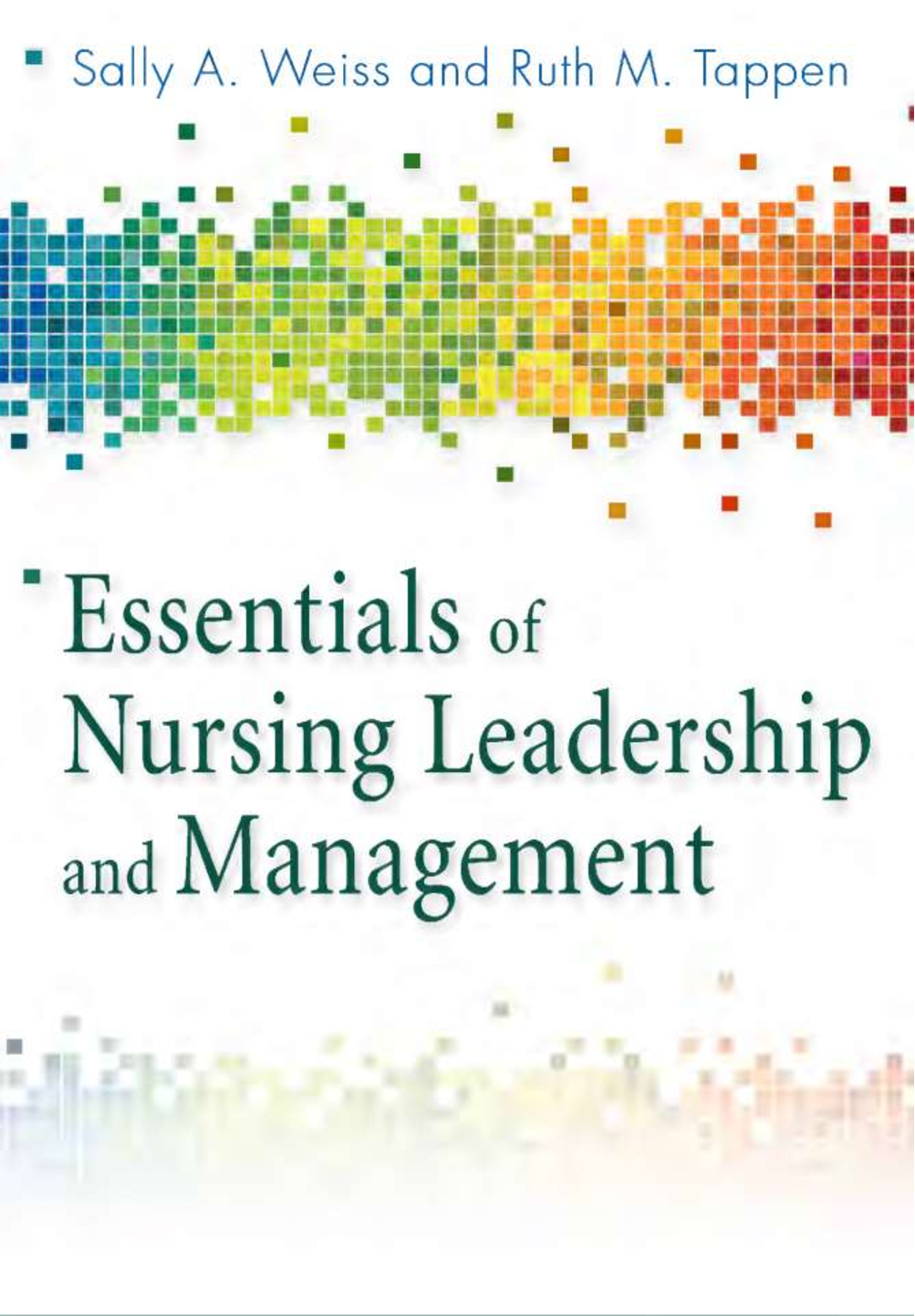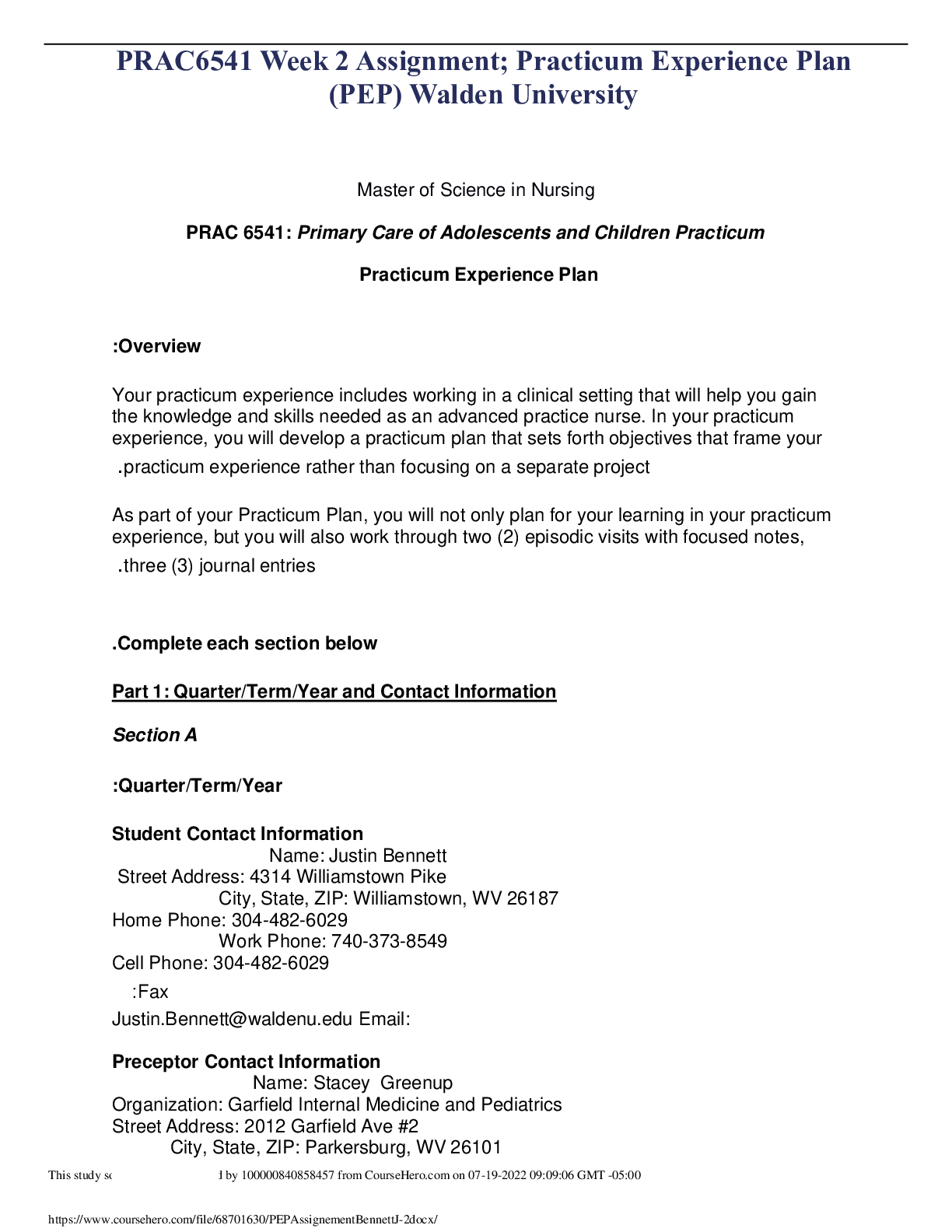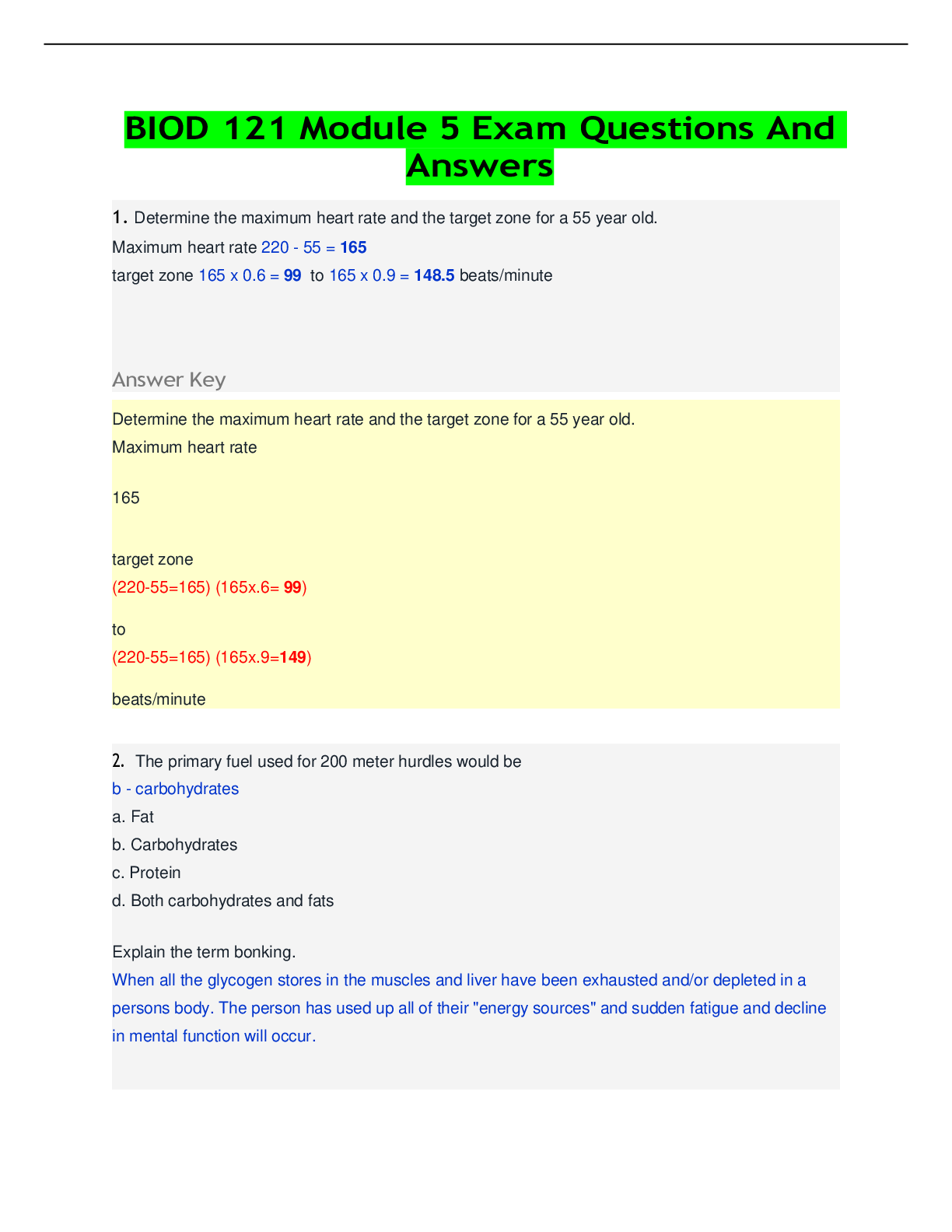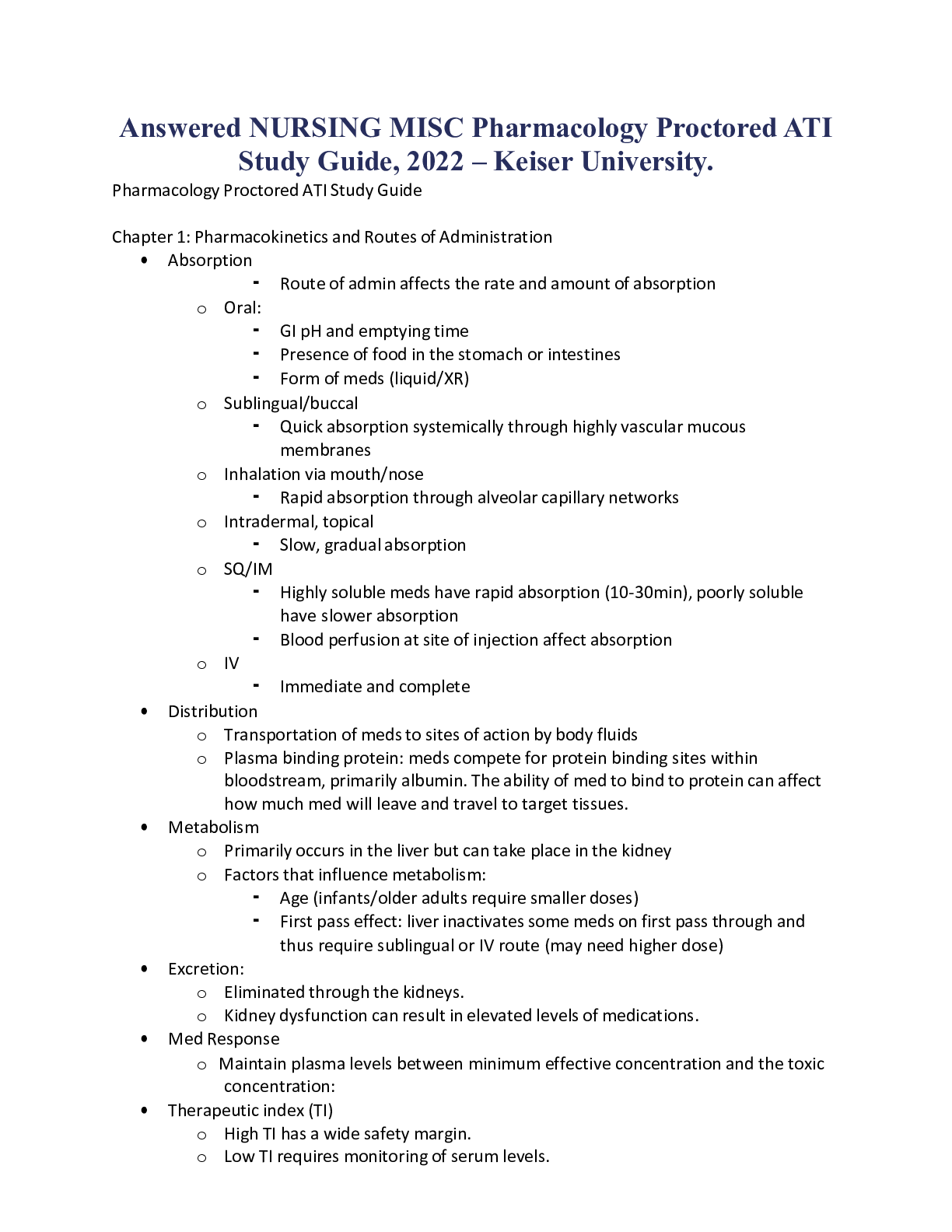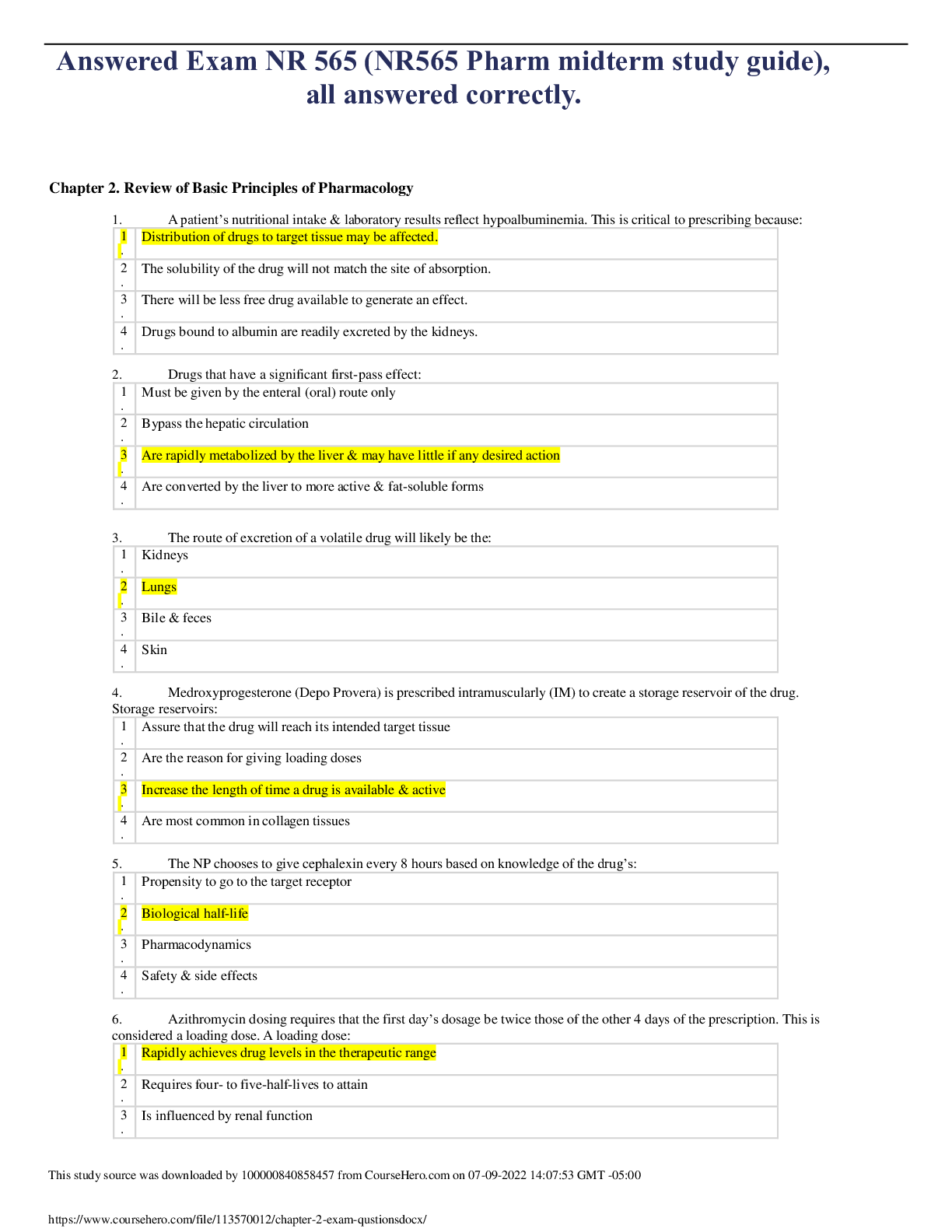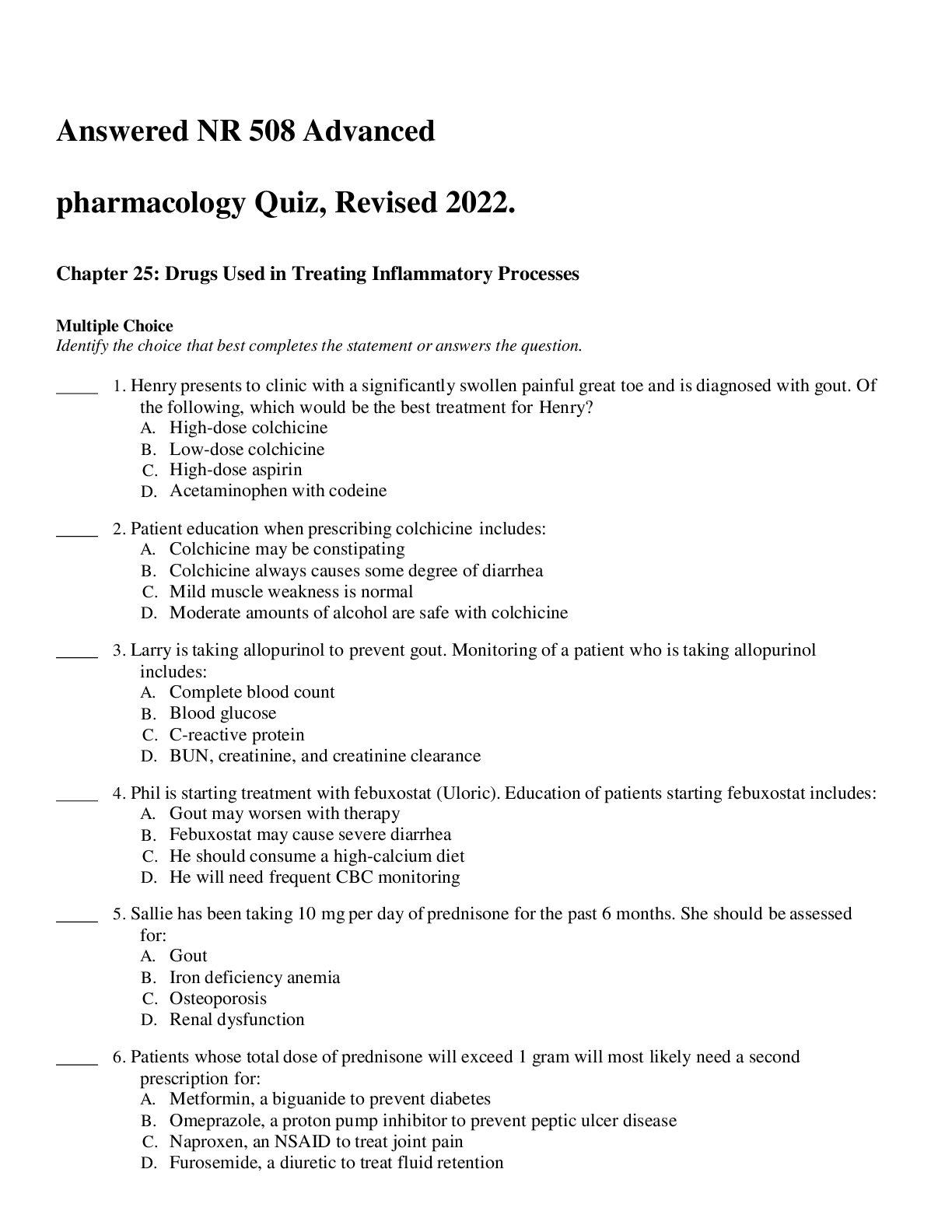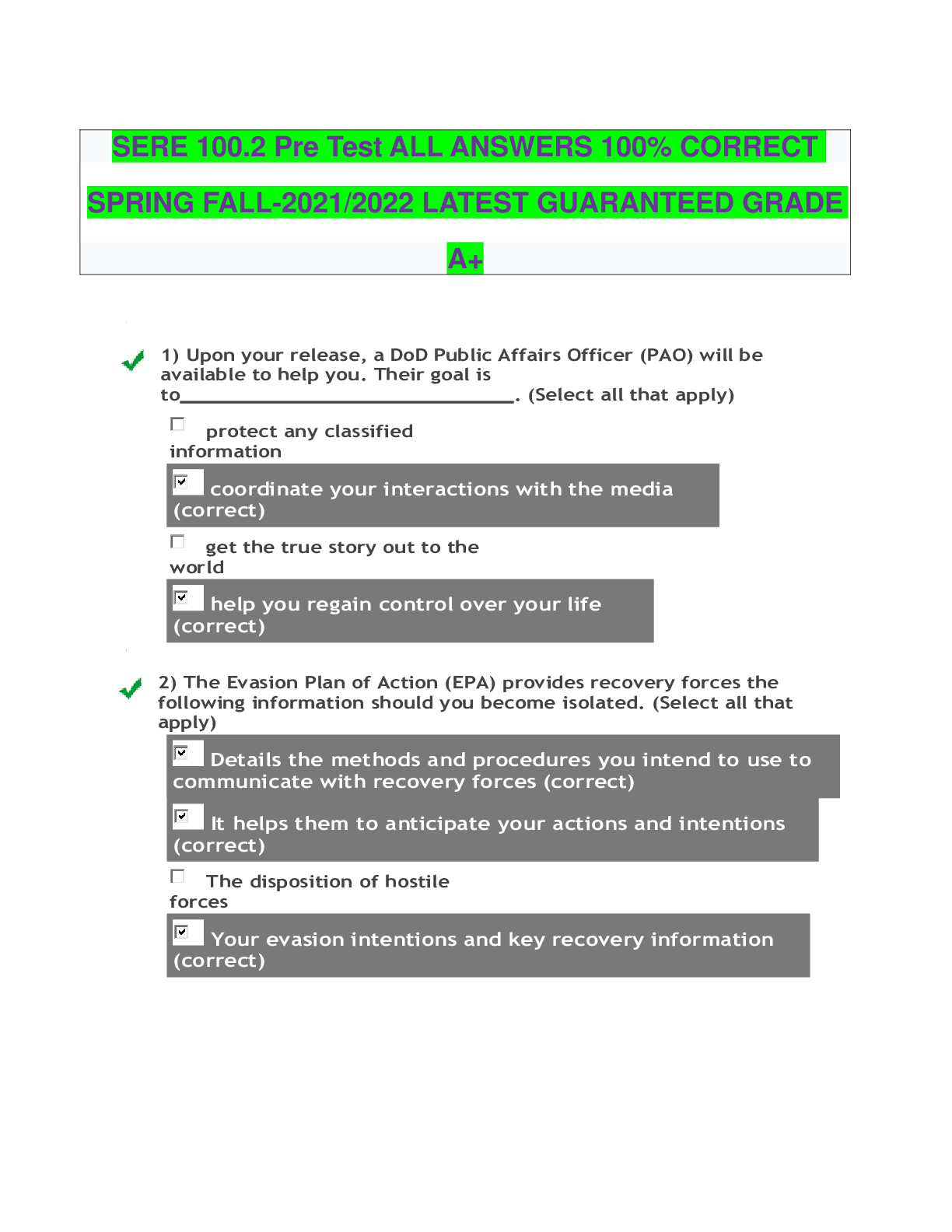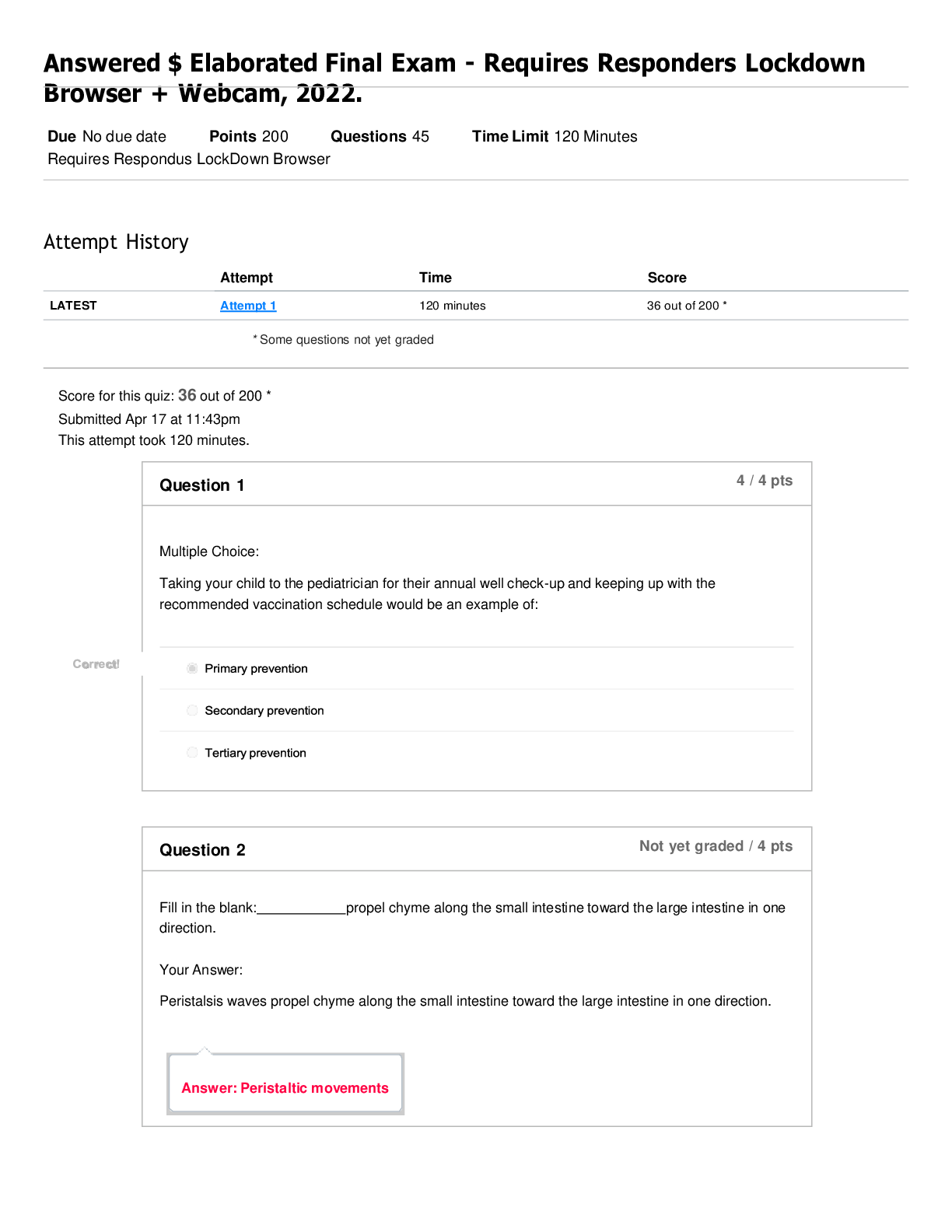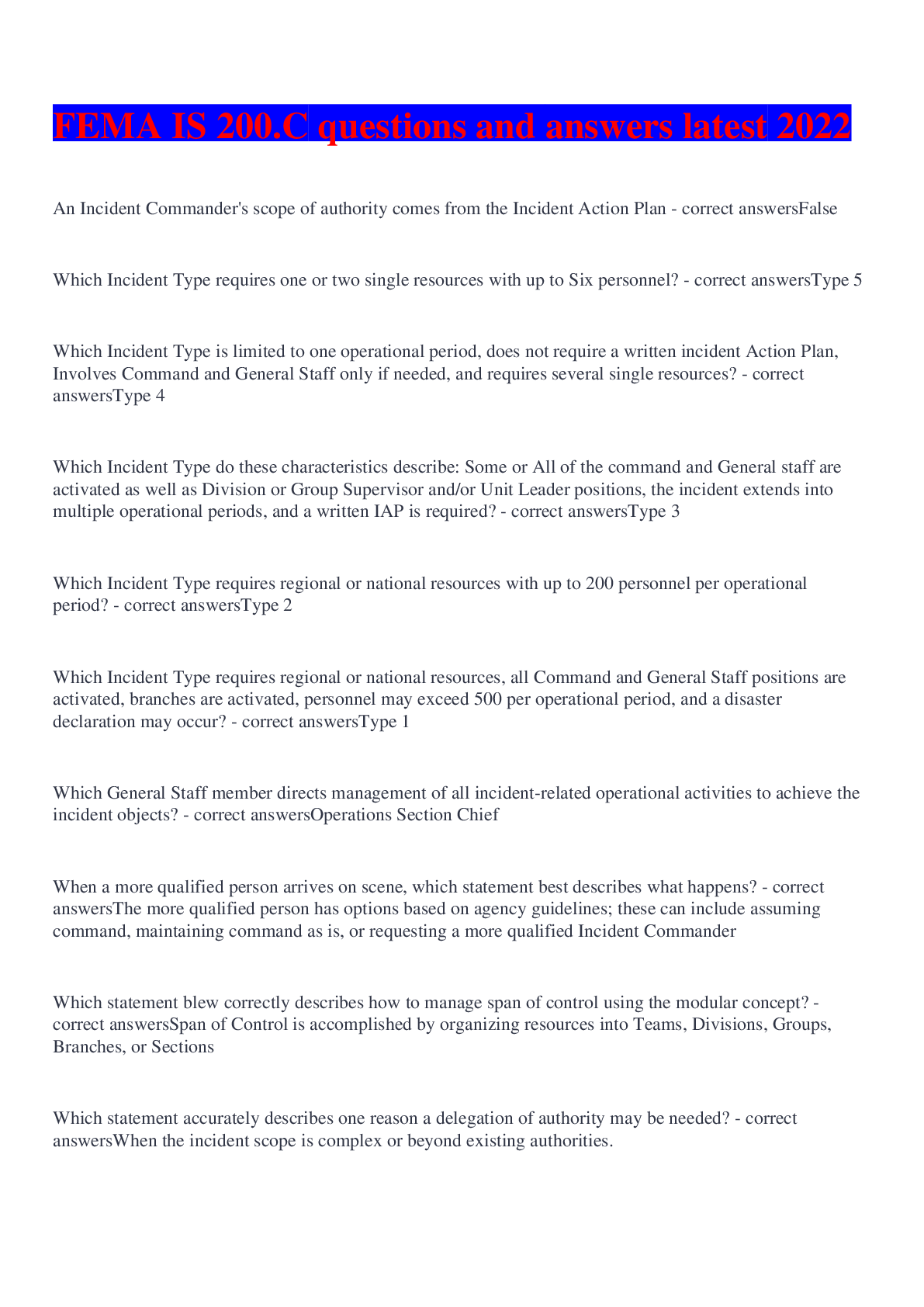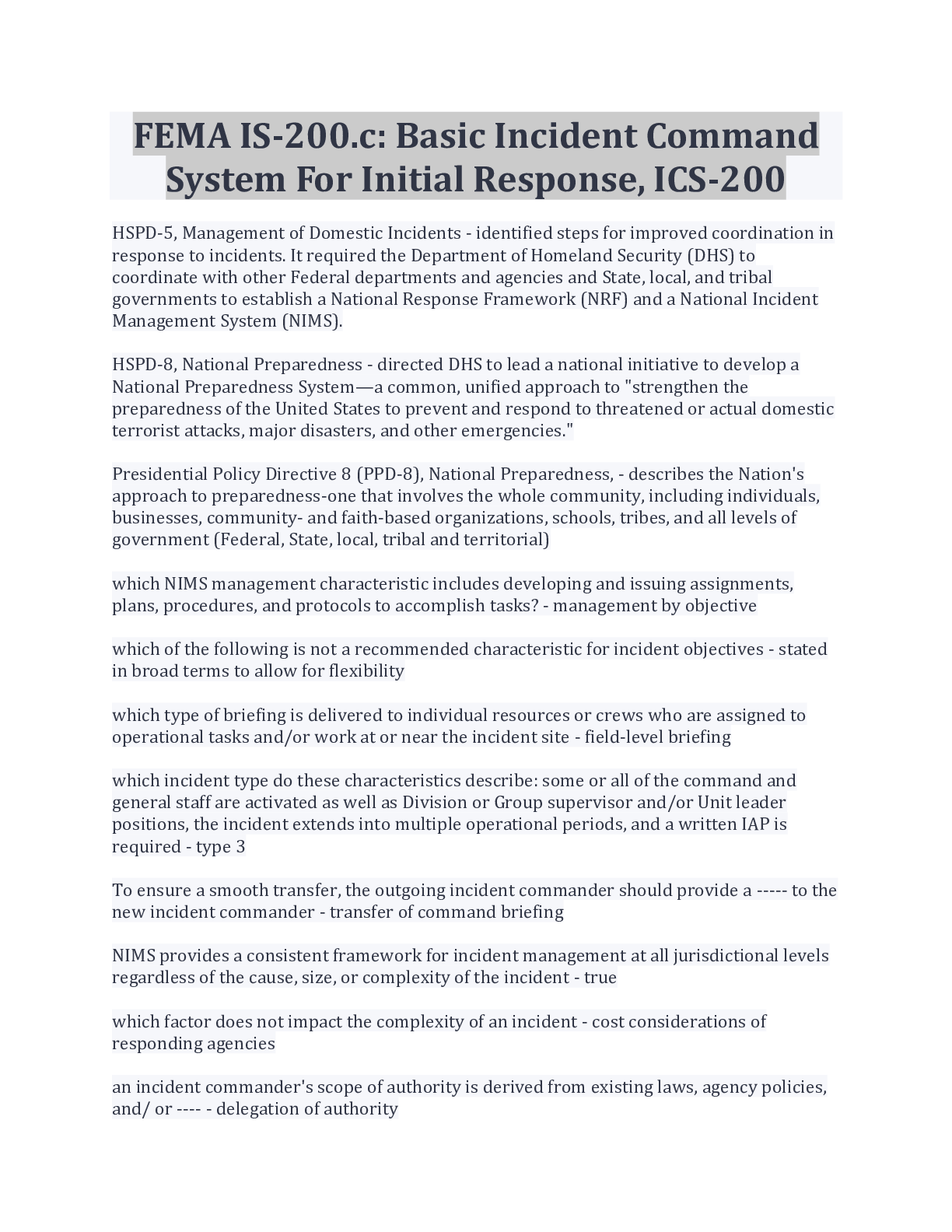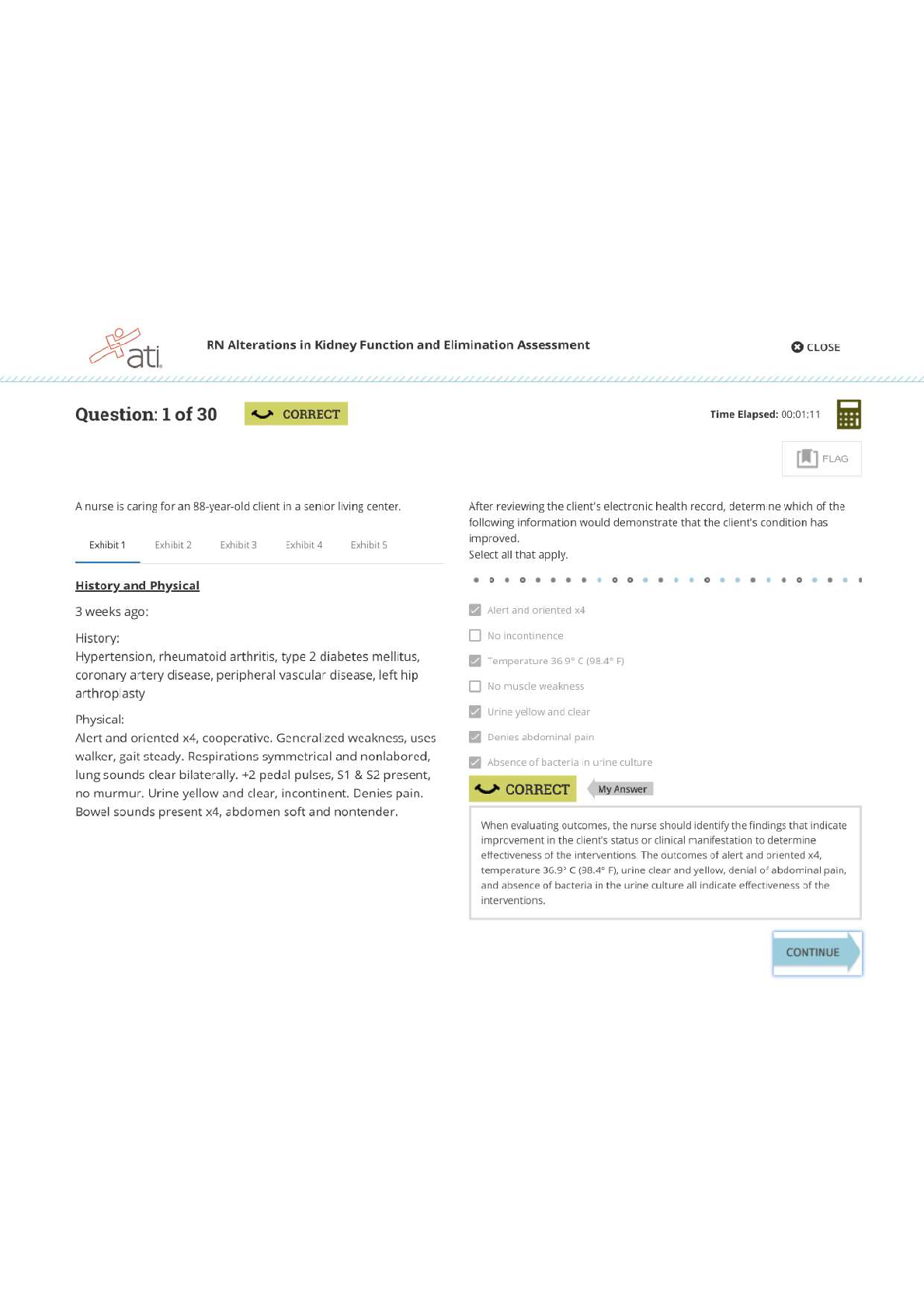General Questions > EXAM > ANSWERED PROSPECT IS-200.C: Basic Incident Command System for Initial Response 2022. (All)
ANSWERED PROSPECT IS-200.C: Basic Incident Command System for Initial Response 2022.
Document Content and Description Below
IS-200.C: Basic Incident Command System for Initial Response Test. _______ major components make up the NIMS systems approach. Command and Management. NIMS standard incident command structures are bas... ed on three key organizational systems: . ______ defines the operating characteristics, interactive management components, and structure of incident management and emergency response organizations engaged throughout the life cycle of an incident. ________________, These systems define the operating characteristics, interactive management components, and organizational structure of supporting incident management entities engaged at the Federal, State, local, tribal, and regional levels through mutual aid agreements and other assistance arrangements. ________________ refers to processes, procedures, and systems for communicating timely and accurate information to the public during crisis or emergency situations. The five major components that make up the NIMS system approach are as follows: - Unity of command means that each individual involved in incident operations will be assigned - and will report to how many supervisors? Chain of command and unity of command help to ensure that clear reporting relationships exist and eliminate the confusion caused by: Unity of command clears up many of the potential communication problems encountered in managing incidents or events because each individual maintains __________ communication relationship only with his or her immediate supervisor. Is Unity of command synonymous with Unified Command. Unified Command enables all responsible agencies to manage an incident together by establishing a common set of incident objectives and strategies, additionally is allows what? Maintains unity of command. Each employee reports to only one supervisor. Advantages of using Unified Command include: Formal communications follow the lines of authority. However, how can information concerning incident or event can be passed? __________ communication must be used when: Receiving and giving work assignments, Requesting support or additional resources, Reporting progress of assigned tasks. __________________ Communication: Is used to exchange incident or event information only. Is NOT used for: Formal requests for additional resources, Tasking work assignments. The Communications Unit Leader may directly contact the Resources Unit Leader to determine the number of persons requiring communications devices. This is a form of what type of communication? Receiving and giving work assignments; Requesting support or additional resources; Reporting progress of assigned tasks, are all example of what type of communication ? The Cost Unit Leader may directly discuss and share information on alternative strategies with the Planning section Chief. This is a form of what type of communication? What is the first duty of ICS Leadership? As a leader, you should try to: Take charge within your scope of authority; Be prepared to step out of a tactical role to assume a leadership role; Be proficient in your job, additionally: While not always possible, the most effective form of communication is: Briefing Elements: Provide complete briefings that include clearly stated objectives and the following elements: Assessment is an important leadership responsibility, and is conducted after a major activity in order to allow employees and leaders to discover what happened and why. Assessment methods include: Because the ICS is a modular concept, managing span of control is accomplished by organizing resources into Teams, Divisions, Groups, Branches, or Sections when the supervisor-to-subordinate ratio exceeds 7, or by reorganizing or demobilizing Sections, Branches, Divisions, Groups, or Teams when the ratio falls below what number? An Incident Commander's scope of authority is derived from what? The process of granting authority to carry out specific functions is called? Delegation of authority: Grants authority to carry out specific functions; Is issued by the chief elected official, chief executive officer, or agency administrator in writing or verbally; Allows the Incident Commander to? Does NOT relieve the granting authority of the ultimate responsibility for the incident. Management by objectives includes: (1)Establishing overarching objectives; (2)Developing and issuing assignments, plans, procedures, and protocols; (3)Establishing specific, measurable objectives for various incident management functional activities, to include: - Documenting results to measure performance and facilitate corrective action. The 6 steps for establishing and implementing incident objectives include: Step 1: Understand agency policy and direction; Step 2: Assess incident situation; Step 3: Establish incident objectives, what are the remaining 3? In an initial incident, a size-up is done to set the immediate incident objectives. The first responder to arrive must do what? The first responder to arrive must assume command and size up the situation by determining what? Hazards and safety concerns include what? Throughout the incident, objectives are established based on what priorities: (2)Measurable and include a standard and timeframe; and? What are the three fundamental pieces of a successful incident response What will Strategies establish? What does an Incident Action Plan (IAP) cover? Mutual aid agreements and assistance agreements are used at what levels of government: - An agency or jurisdiction will often send resources to assist at an incident. In ICS these are called? _________________ is defined as an agency or organization providing personnel, services, or other resources to the agency with direct responsibility for incident management. ________________ is an agency supplying assistance other than direct operational or support functions or resources to the incident management effort. An assisting agency has direct responsibility for incident response, whereas a cooperating agency does what? Staging Areas are set up at the incident where resources can wait for a tactical assignment. All resources in the Staging Area are assigned and ready for deployment. Does this include Out-of-service resources? What are the three types of briefings/meetings used in ICS? - This level of briefing typically involves resources assigned to operational tasks and/or work at or near the incident site. These briefings will be delivered to individual subordinates, full crews, or multiple crews such as Strike Teams or Task Forces and will occur at the beginning of an operational shift. It is referred as? This level of briefing typically involves the briefing of an entire Section (Operations, Planning, Logistics, or Finance/Administration) and is done by the specific Section Chief. These briefings occur at the beginning of the assignment to the incident and after the arrival of Section supervisory staff. It is referred as? During any______________, the supervisor attempts to share incident-wide direction from the Incident Commander (IC), how the direction impacts the Section staff, and specific ways the Section will support the IC's direction. The supervisor will establish Section staffing requirements, Section work tasks, Section-wide scheduling rules, and overall timelines for meetings and completion of work products. - To ensure that responders get the right personnel and equipment, ICS resources are categorized by: Types of Resources: Describe the size, capability, and staffing qualifications of a specific kind of resource. Requesting a resource kind without specifying a resource type could result in what? Incidents, like resources, may be categorized into five types based on complexity. How are they categorized? IMTs are made up of the Command and General Staff members in an ICS organization. What are characteristics of a Type 5 Incident (least Complex): What characteristics of a Type 4 Incident? What are characteristics of a Type 3 Incident? What are characteristics of a Type 2 Incident? - What are characteristics of a Type 1 Incident? Time Span: The incident is expected to go into multiple operational periods. A written Incident Action Plan is required for each operational period. A transfer of command briefing should always take place. The briefing should include: - Incident communications plan; Incident prognosis, concerns, and other issues; Introduction of Command and General Staff members. Whenever possible, how should a transfer of command occur? [Show More]
Last updated: 1 year ago
Preview 1 out of 12 pages
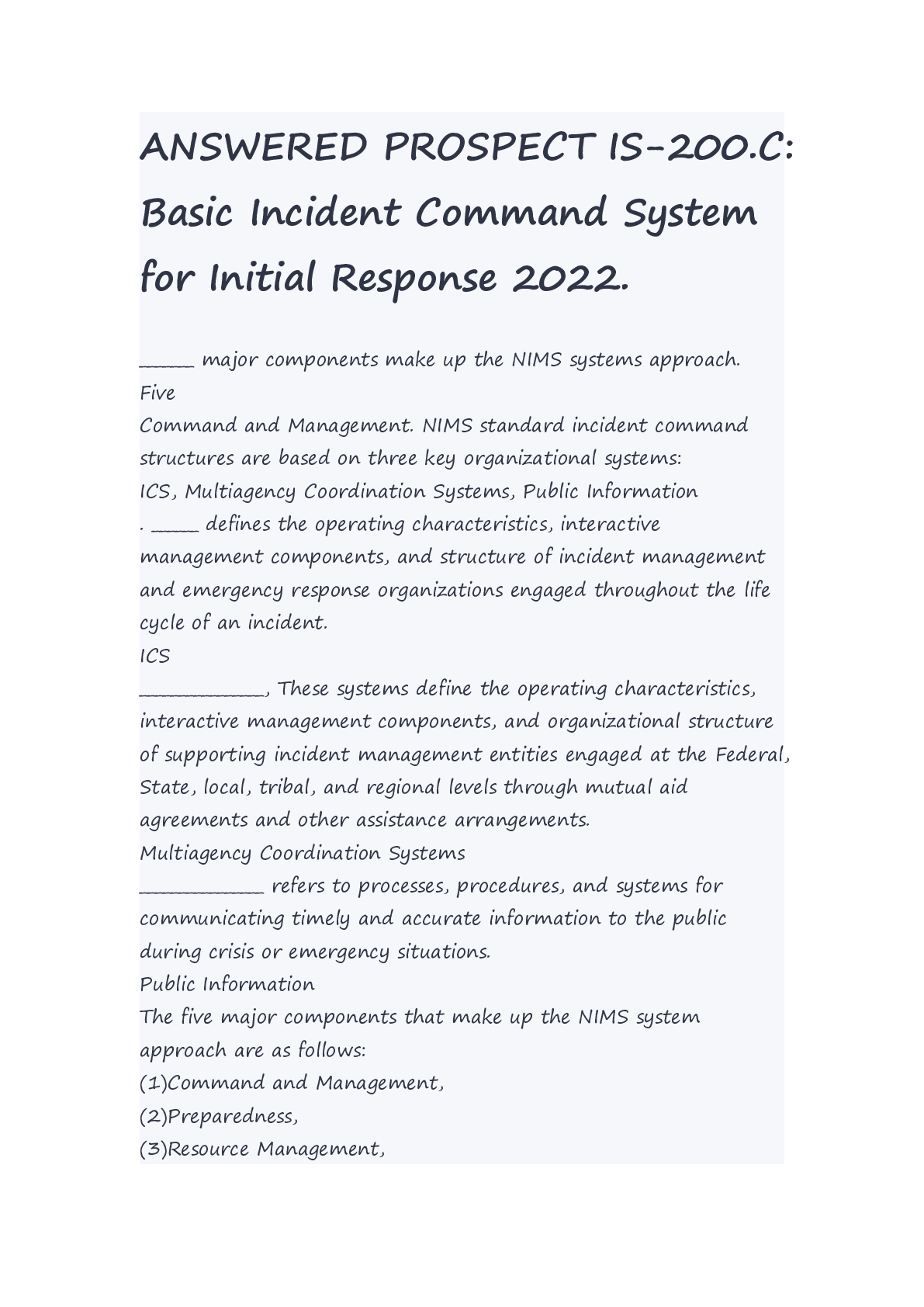
Reviews( 0 )
Document information
Connected school, study & course
About the document
Uploaded On
Nov 12, 2022
Number of pages
12
Written in
Additional information
This document has been written for:
Uploaded
Nov 12, 2022
Downloads
0
Views
40

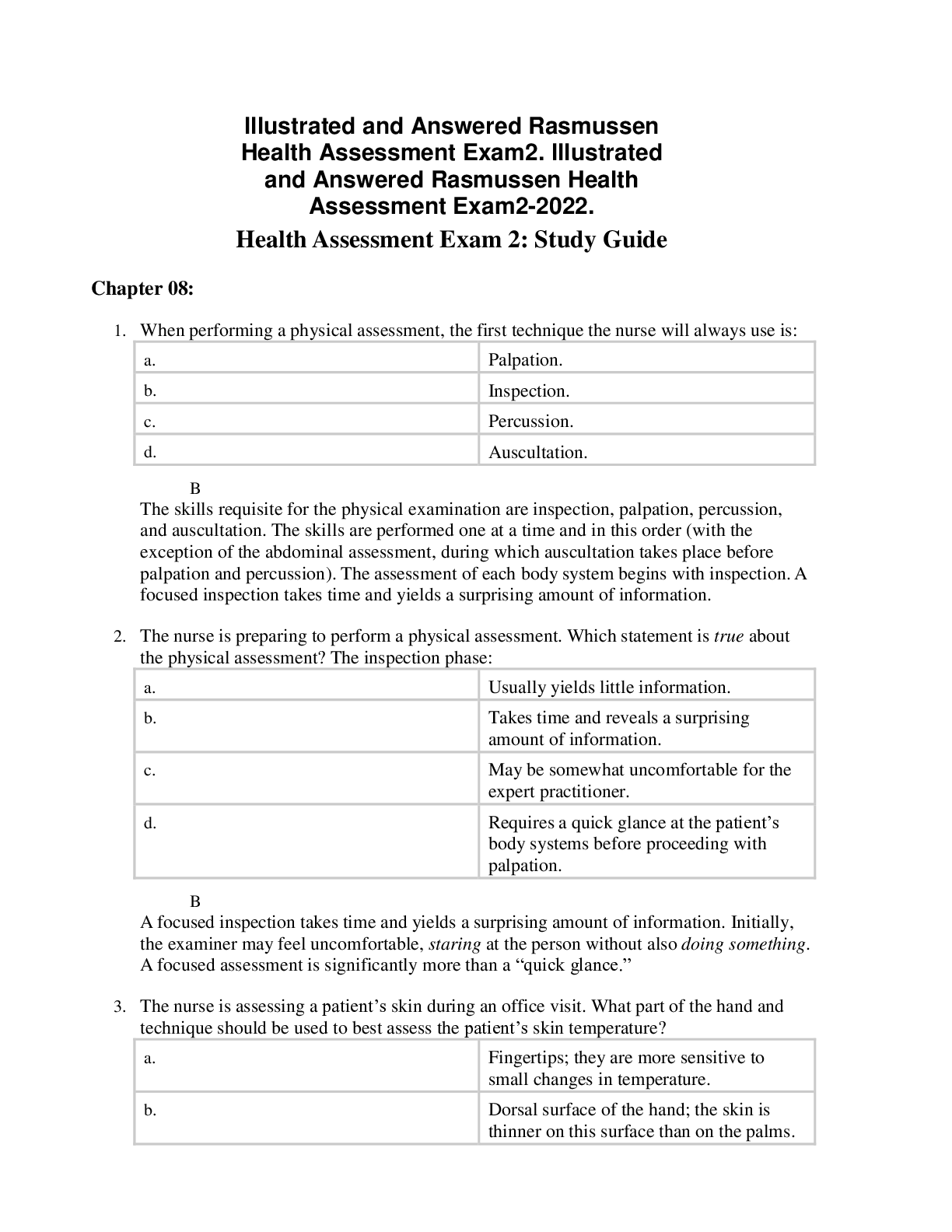

.png)

